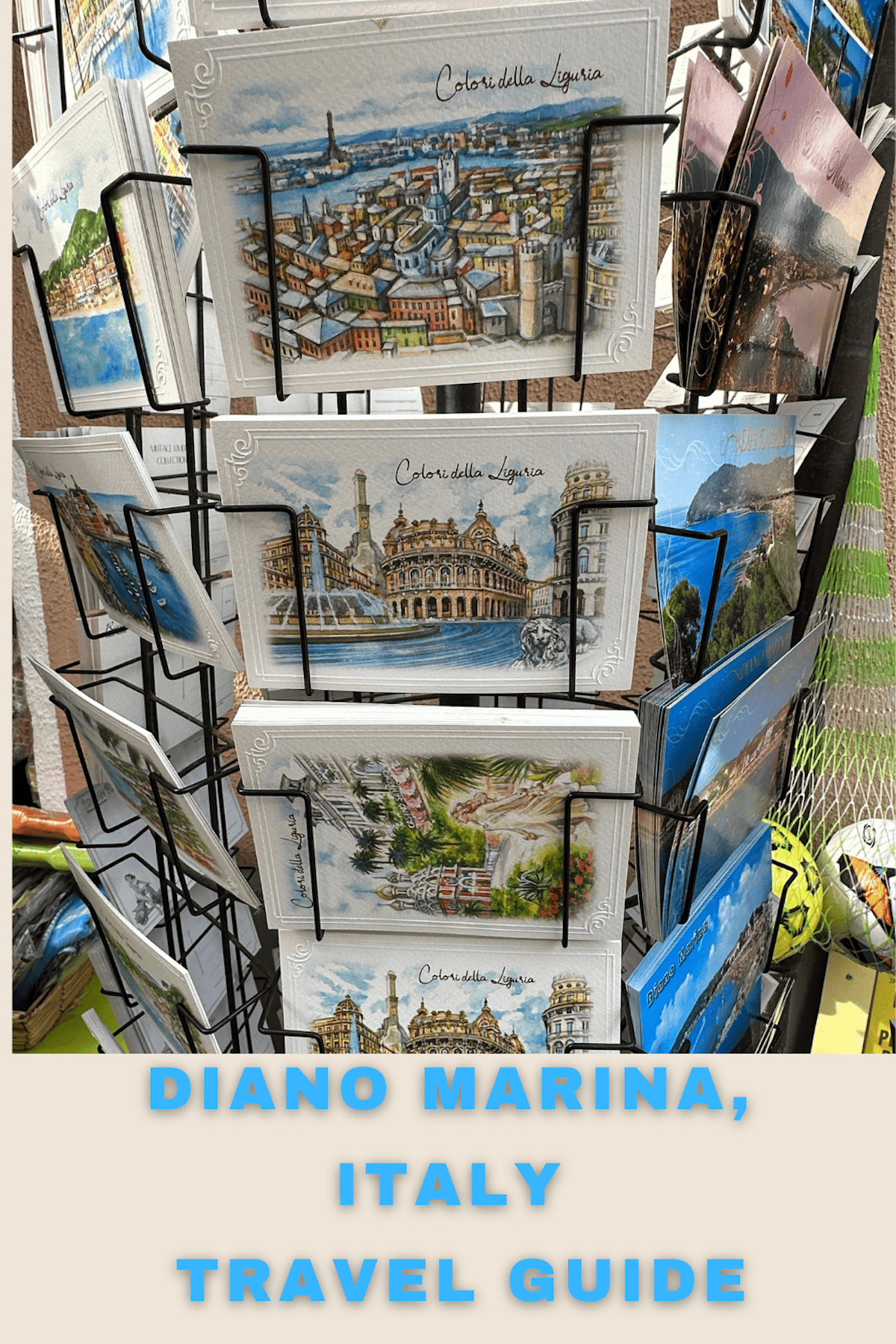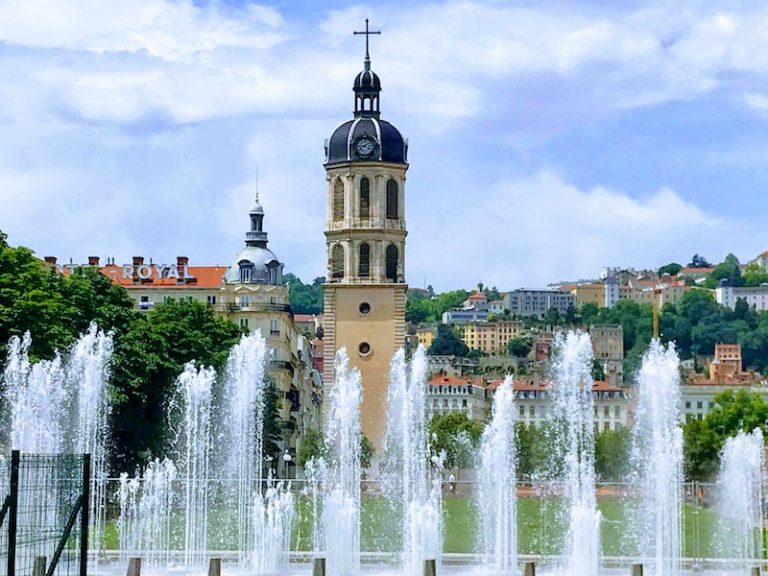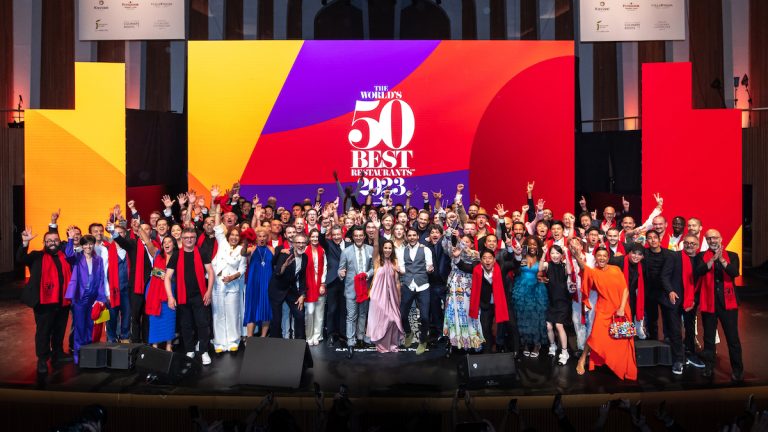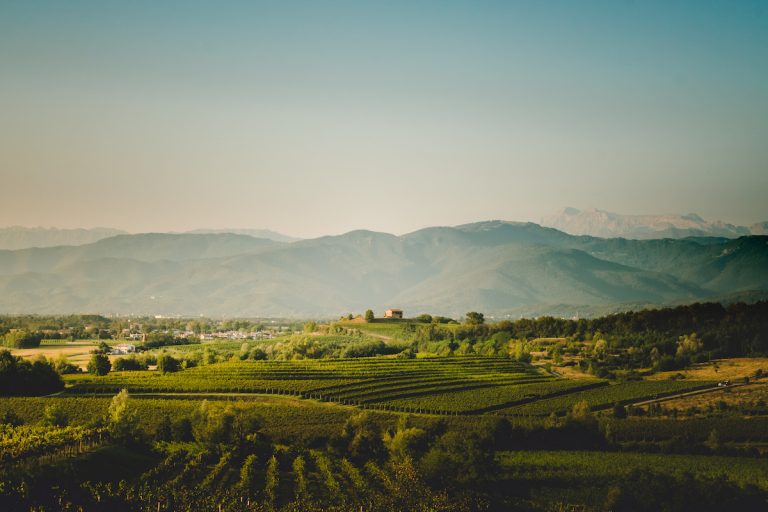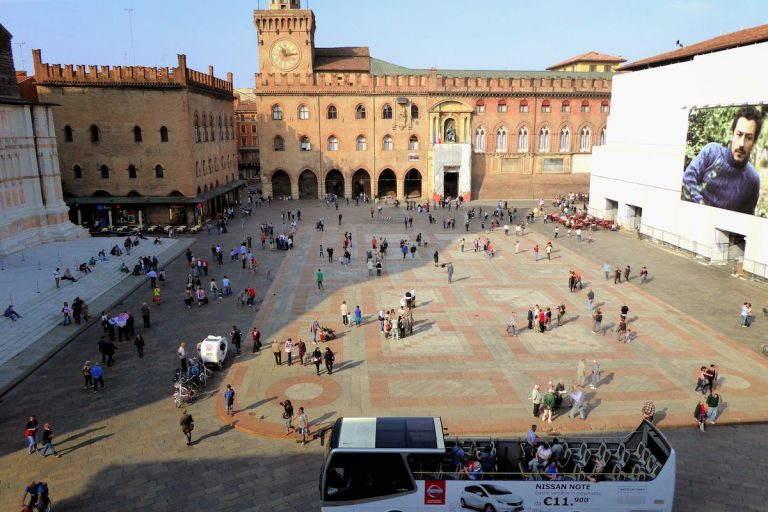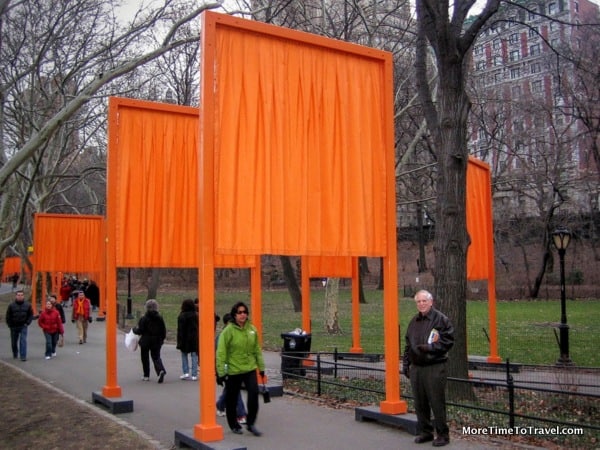Diano Marina: A Charming and Unpretentious Beach Town in Italy
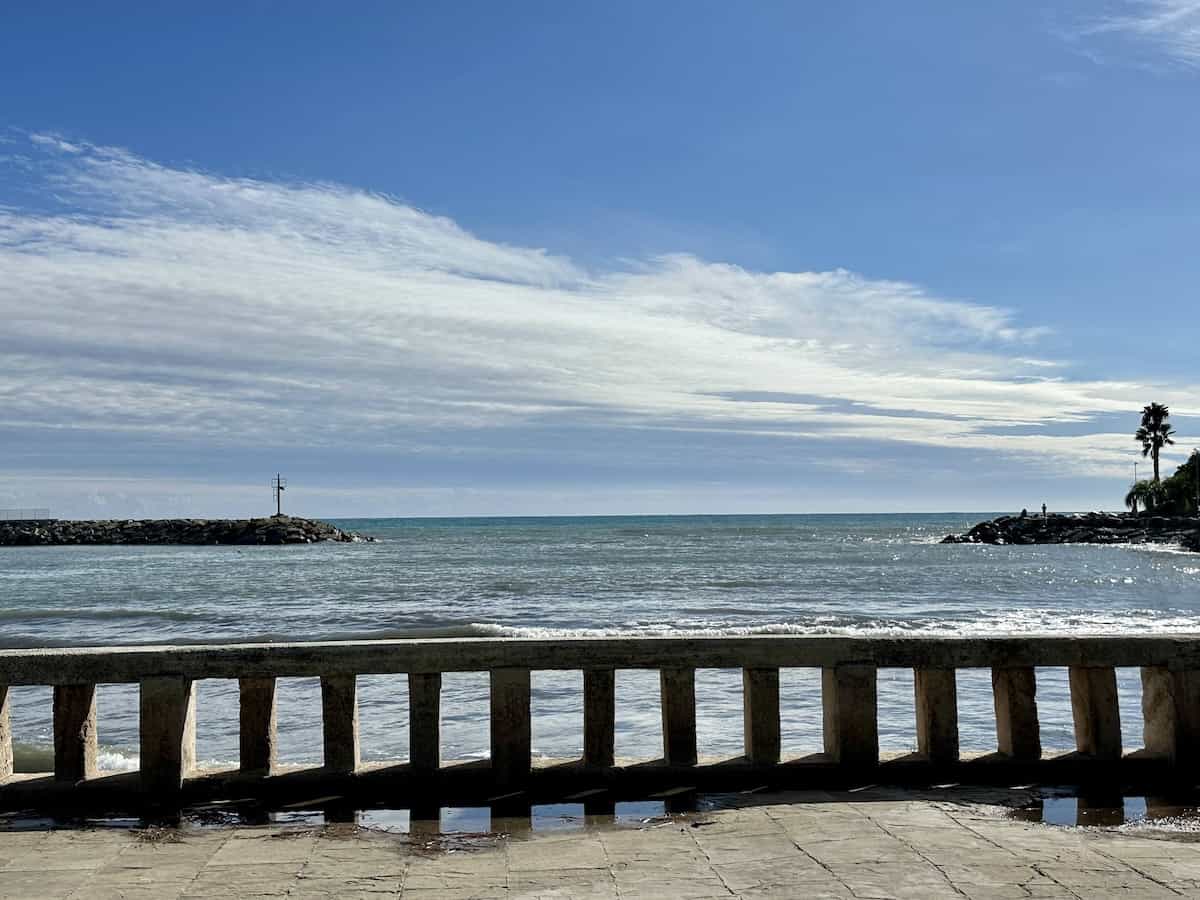
Consider Diano Marina the antithesis of New York’s Hamptons or Italy’s Forte dei Marmi.
While all three are summertime meccas with long sandy beaches and clear blue waters, Diano Marina is the least posh, most relaxed, and definitely most authentic.
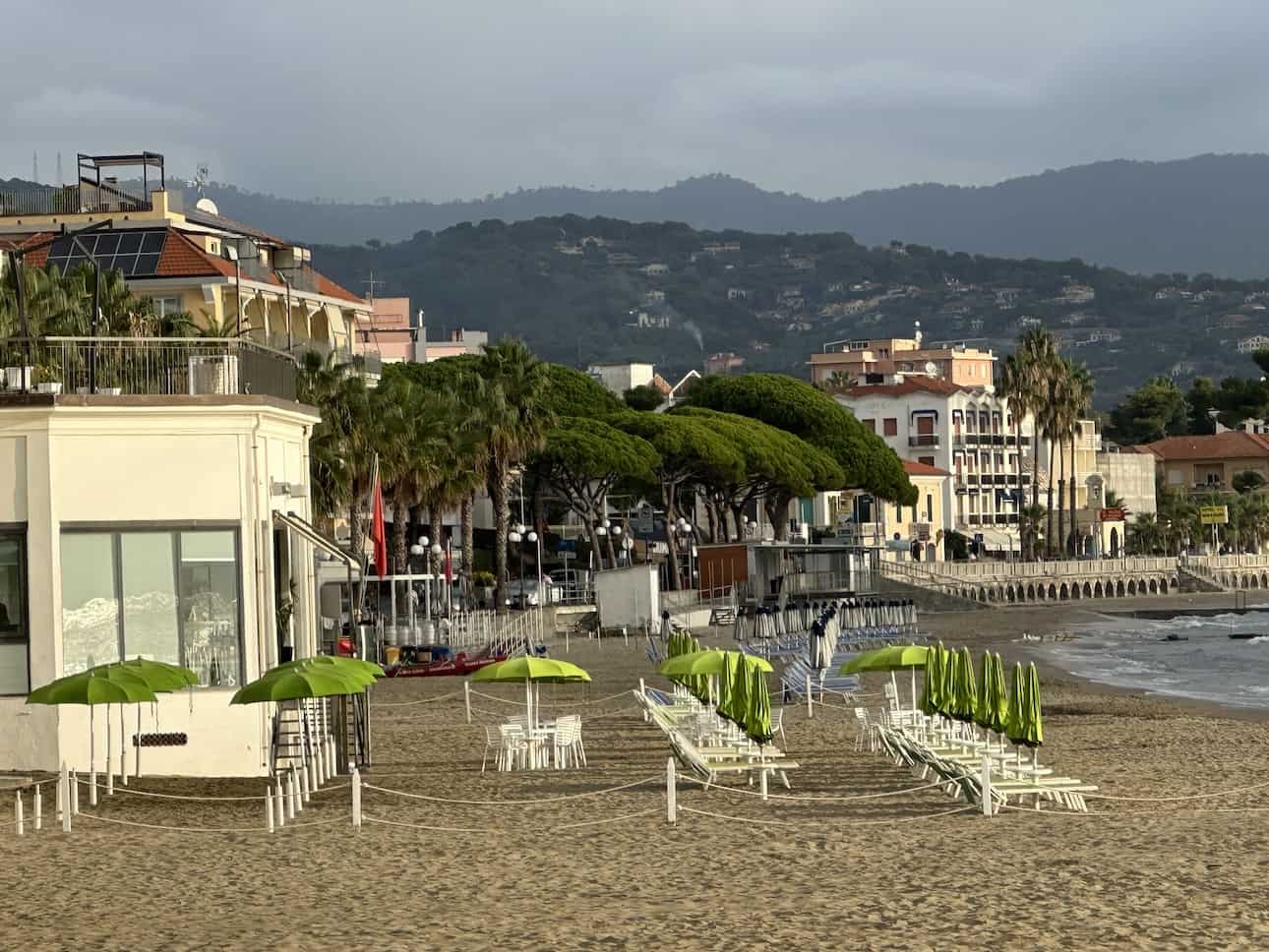
With a near-perfect climate and a breathtaking setting, the town’s population swells between May 15 and September 15th with an influx of seasonal tourists, predominantly from Germany, Switzerland, and other parts of Italy.
Instead of exclusive designer boutiques, small family-owned retailers line the town center selling reasonably priced clothes, shoes and leather goods, household wares, souvenirs, and other items.
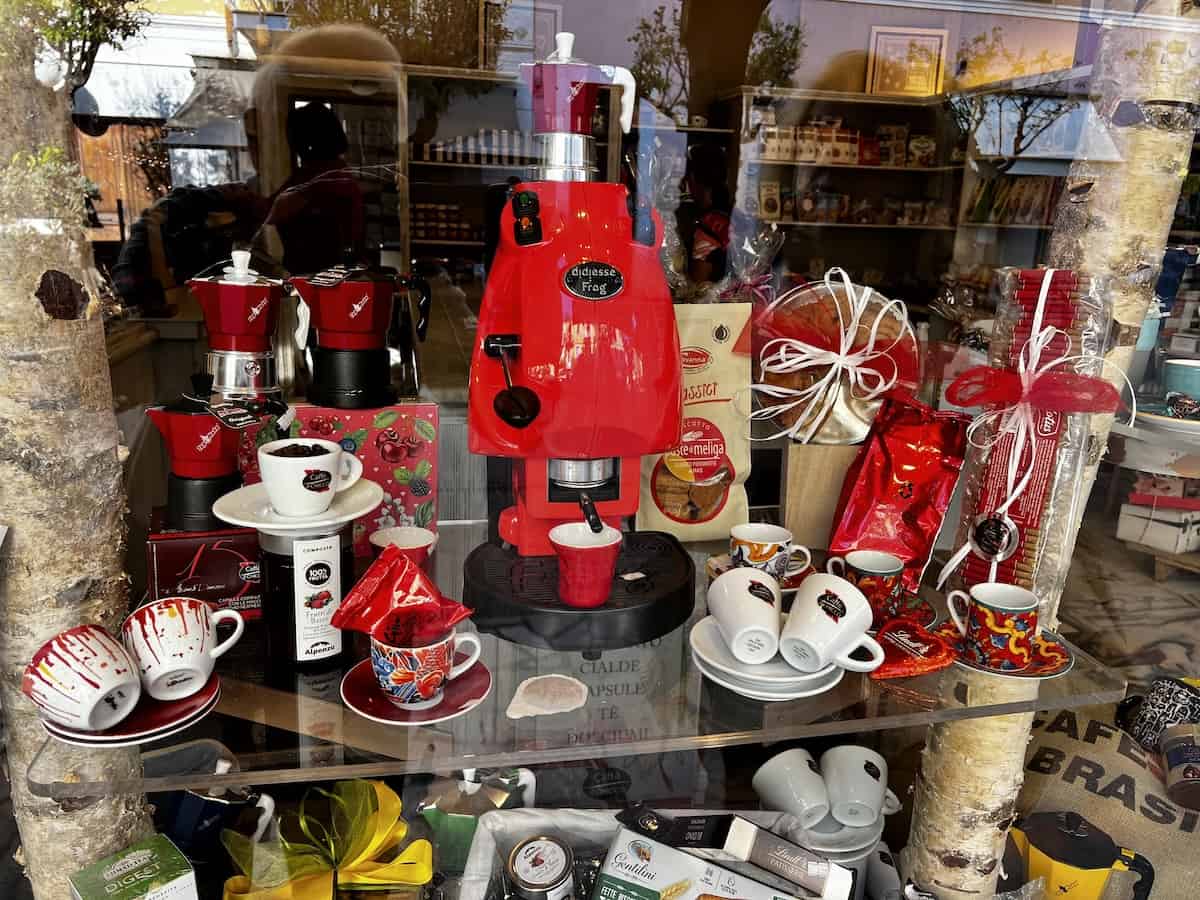

Corso Roma, the pedestrian-friendly main street in the old town has an abundance of bakeries, fruit stores, wine shops, pasticcerias—and trattorias, pizzerias, and bars with indoor and outdoor seating for quick snacks or heartier meals.
Where is Diano Marina?
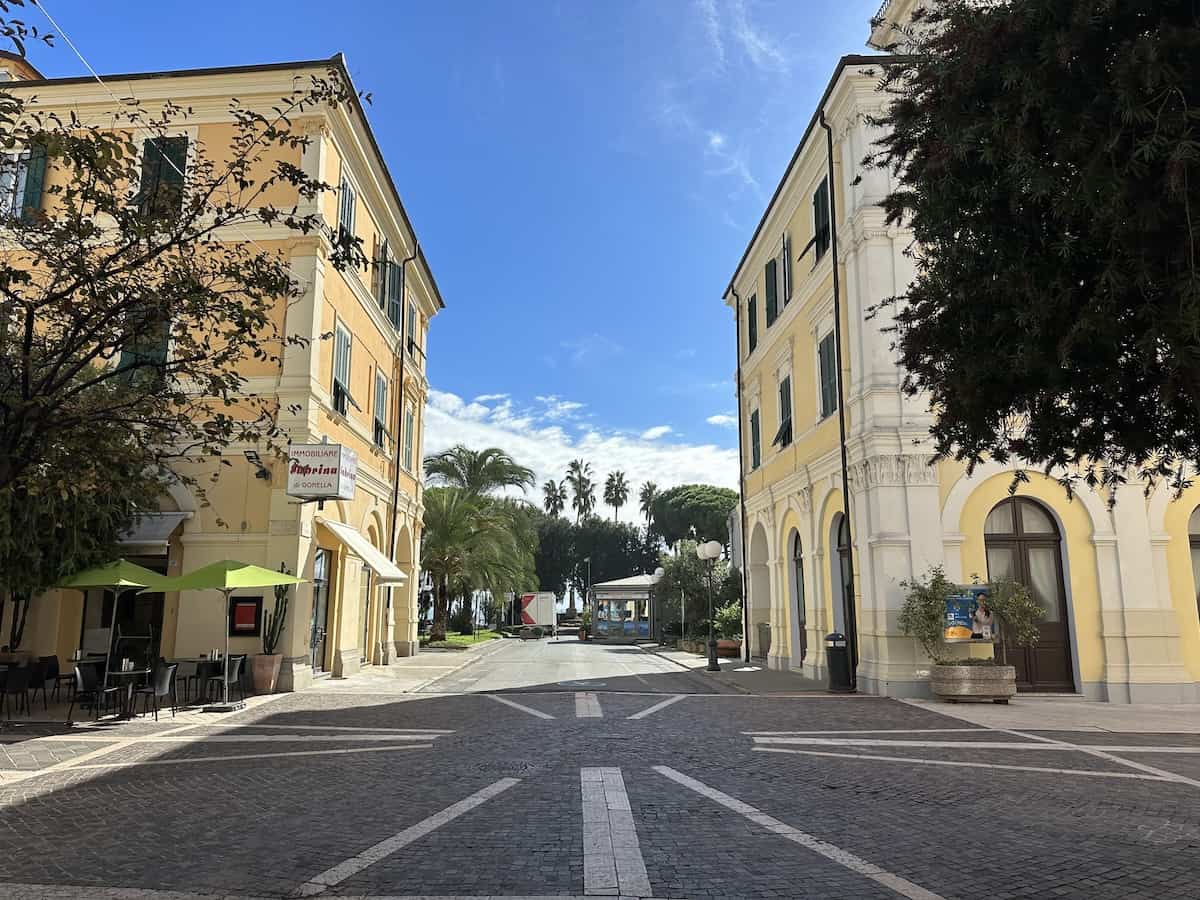
Diano Marina occupies a picturesque location on the Mediterranean Sea in the province of Imperia (in the region of Liguria) in northwest Italy.
It is located near the French border on the far-less touristed Ponente side of Liguria, almost equidistant from Genoa and Nice, France.
A Town With A Rich History
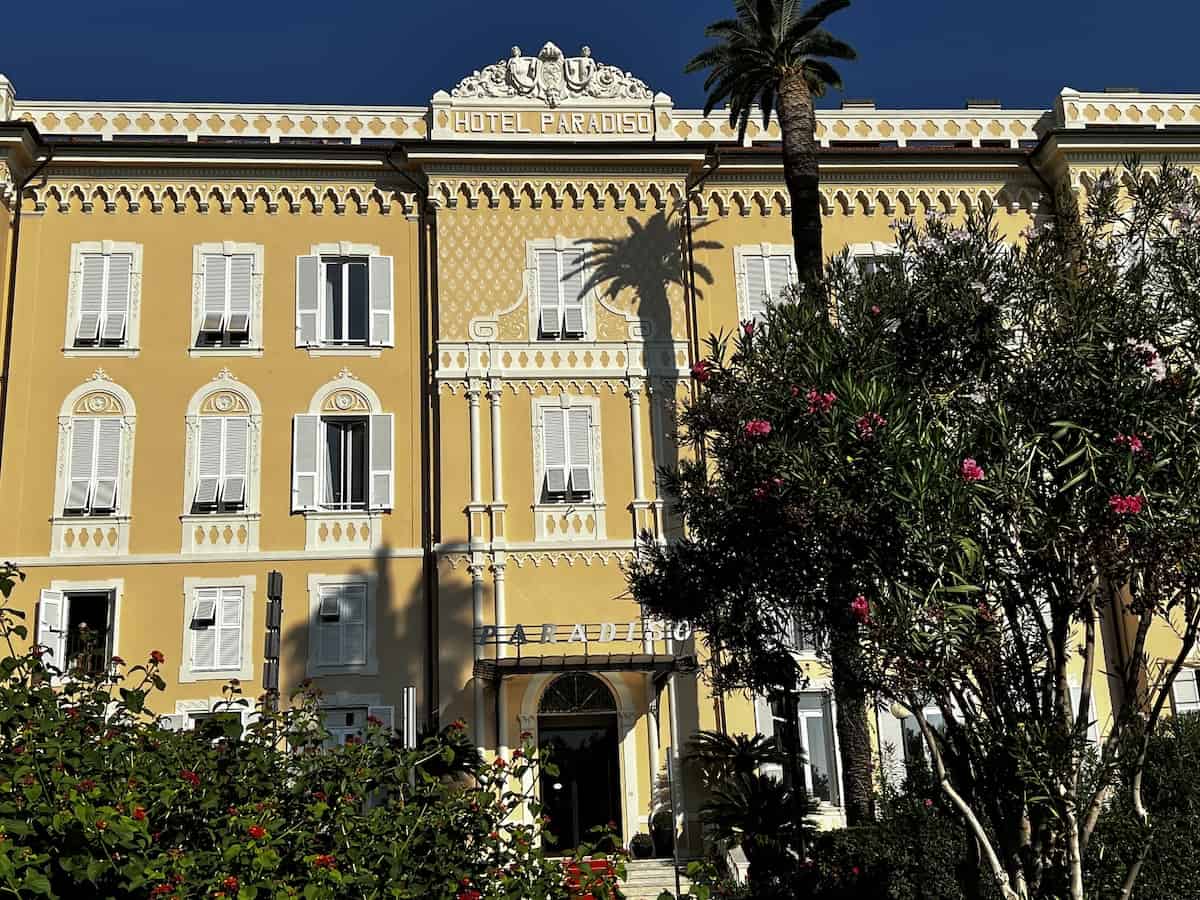
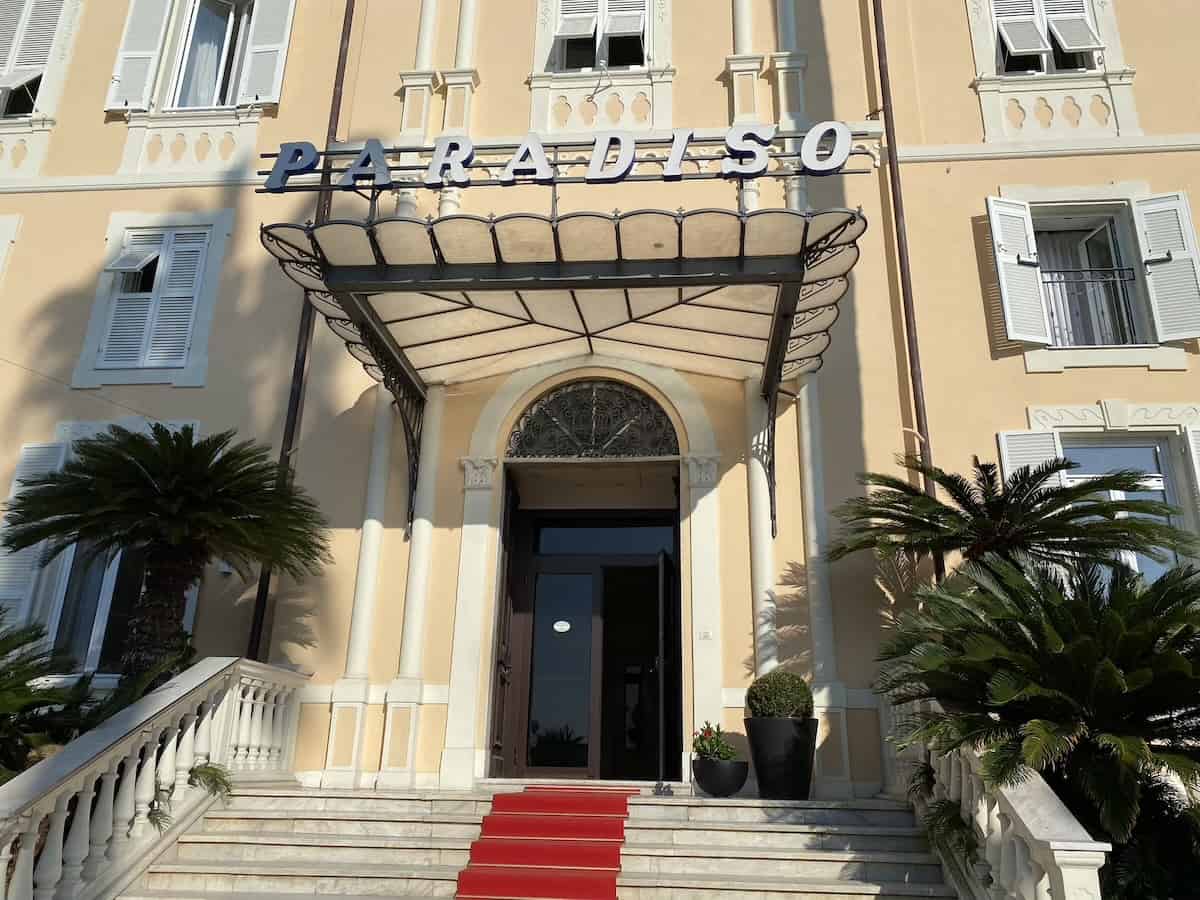
The area has been inhabited since ancient times and with a strategic location on the sea, the small town prospered as a center of maritime trade during the Middle Ages and the Renaissance.
But it wasn’t until the late 19th and 20th centuries that the mild climate and natural beauty of Diano Marina made it a haven for tourists.
During this period, several grand hotels facing the sea were constructed in the Belle Epoque and Art Nouveau architectural styles typical of the era.
During World War II, Diano Marina endured bombings and occupations that damaged much of its infrastructure and razed many of its historic buildings. After the war, many of these properties, including hotels like Hotel Paradiso, were rebuilt. But the town still feels like a place where time has stood still since the 60s or 70s.
Now, seasonal visitors own second homes here or rent accommodations for the season or shorter periods.
Reasons to Visit Diano Marina
Here are some of the compelling reasons to visit Diano Marina:
Relaxation and Enjoyment of Simple Pleasures
Like most Italians, permanent residents and visitors take their characteristic evening walks (passeggiata) but Diano Marina isn’t a place “to see and be seen.” The dress code is casual and beachy, and the atmosphere is relaxed.
If you rent a unit for a week or longer, you can live more or less like an Italian. The first time we visited Diano Marina, we stayed at a hotel but opted for a rental apartment the second time around.
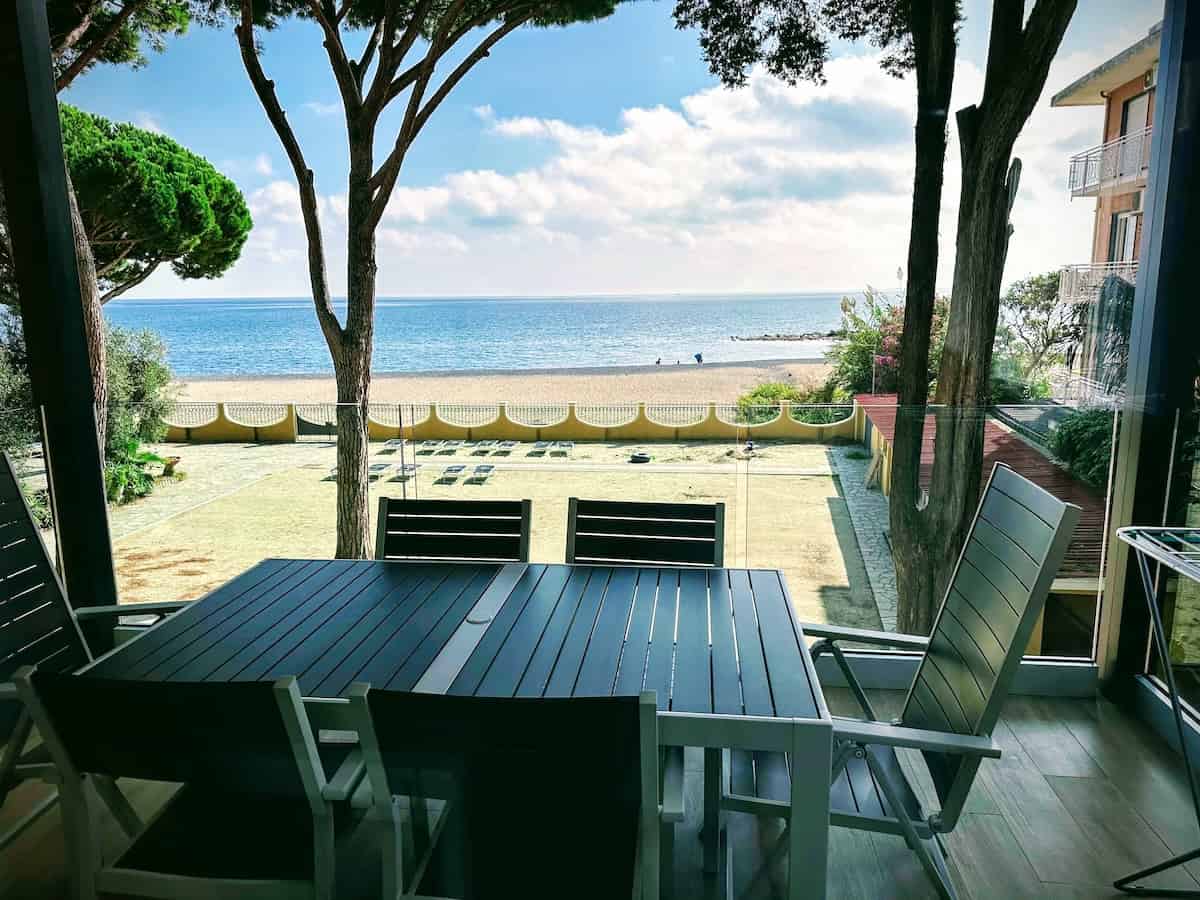
We often cooked at home and ate on our balcony at our modern, two-bedroom rental unit with a sea view and beach access. We bought fresh pasta from the local pasta shop, produce from local vendors, warm bread from bakeries, and filling in with products from one of the two modern Pam supermarkets, a chain that operates over 1000 markets in Italy.
On Tuesday mornings, we could buy fresh foods at the weekly outdoor farmers market set up at Piazza Virgilio at the end of town.
On our first visit to Diano Marina, we stayed at Hotel Torino, a four-star wellness hotel just a few blocks from the beach. Although the hotel’s guest rooms and public areas look a bit retro by American standards, the warmth of the staff and sumptuous breakfasts (included in the room’s price) compensated for our initial disappointment.
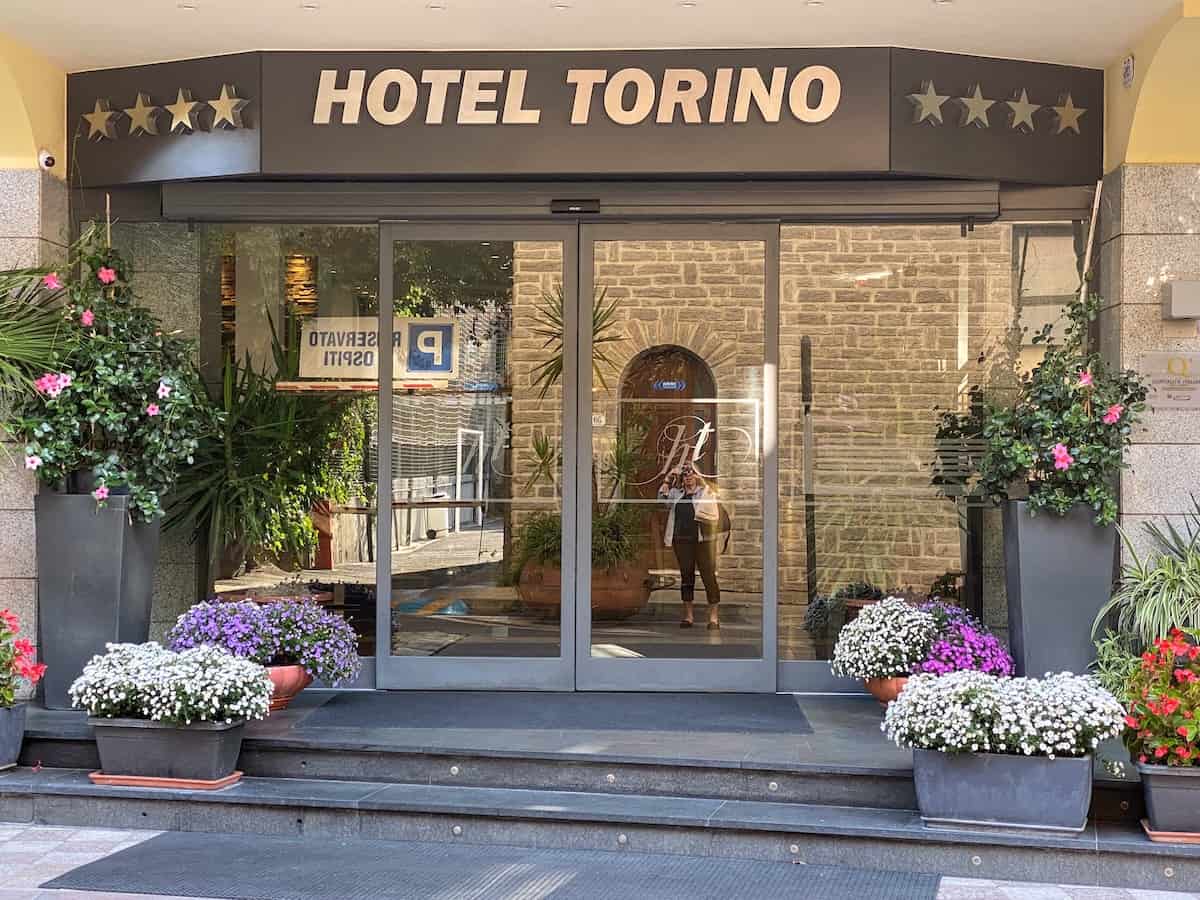
The beach and palm-lined promenade were perfect for long strolls to soak in the sun glistening on the water. After dinner, we would walk on the pedestrian-only streets around the Corso Roma, lined with orange trees.
The town center has a small port and a picturesque pier, Molo delle Tartarughe. Many rent bikes to take long rides, hike along the sea from Imperia to Ospedaletti, or find a big rock on the beach to lie upon as they bask in the sun.
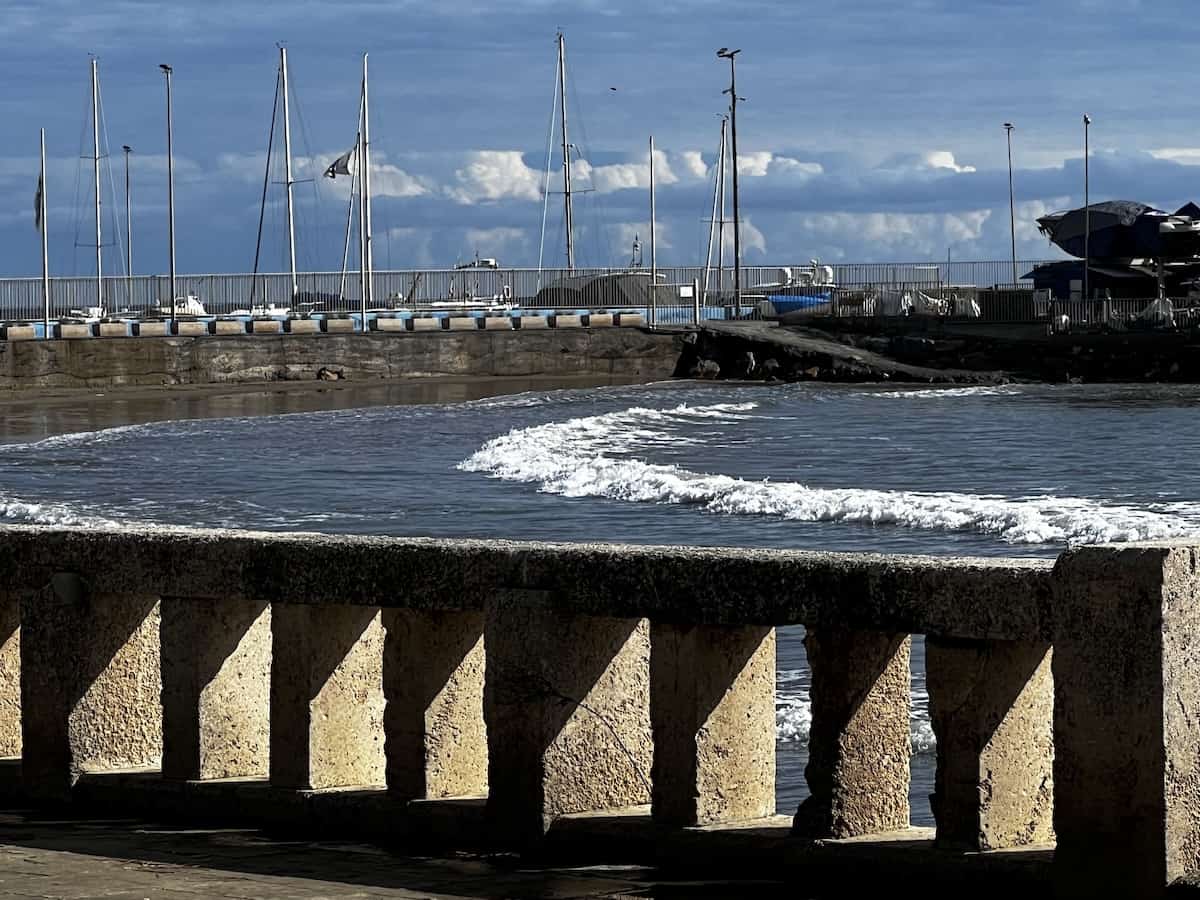
Diano Marina is family-friendly, too. Kids can ride on the carousel, build sand castles, or participate in town-sponsored ten-pin, karting, tennis, mini-golf, and sports pitches in season.
Climate
A study of 107 cities by an Italian radio station ranked Imperia as having the best weather in Italy. Temperatures are mild, rain is infrequent (although it rained one of the two times we were there in autumn), and there are 2,570 hours of sunshine annually. We found that even when it rains, the sun usually comes out afterward.
Located on the 44th parallel north, there is virtually no winter in Diano Marina, and visitors can swim or enjoy water sports between April and October.
Outstanding Regional Foods and Wine
Ligurian cuisine is characterized by diverse products—both from the mountains and the sea: Seafood, meats, vegetables, and herbs. Whatever your palate, whether you cook at your accommodation or dine al fresco at a restaurant, you will eat well in Diano Marina.
From the sea

With a lengthy stretch of coast on the Med, Ligurian menus are blessed with various fresh fish and shellfish, including anchovies, sardines, polpo (octopus), lobster, shrimp, prawns, oysters, cod and sea bass.
Gente di Mare (People of the Sea) in Bussana Mare was one of the most memorable restaurants we dined at. Rather than ordering from a menu, guests are treated to an exceptional meal of whatever is fresh that day, typically seven different dishes with wine, dessert, and coffee (reasonably priced at less than 50€ per person).
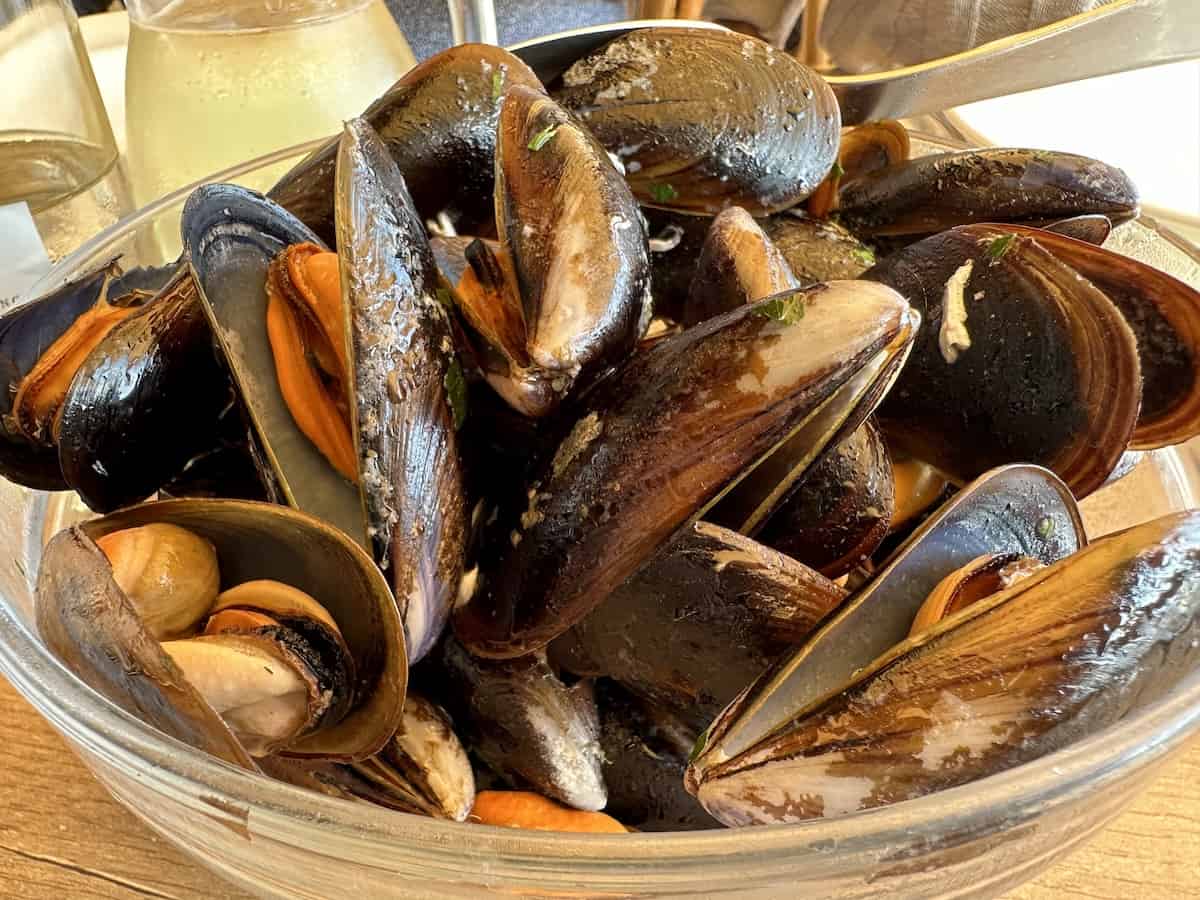
The service and setting right on the water were magnificent and well worth the half-hour drive from Diano Marina. Tables were so close to the water that it feels as if you are dining on a ship.
From the land
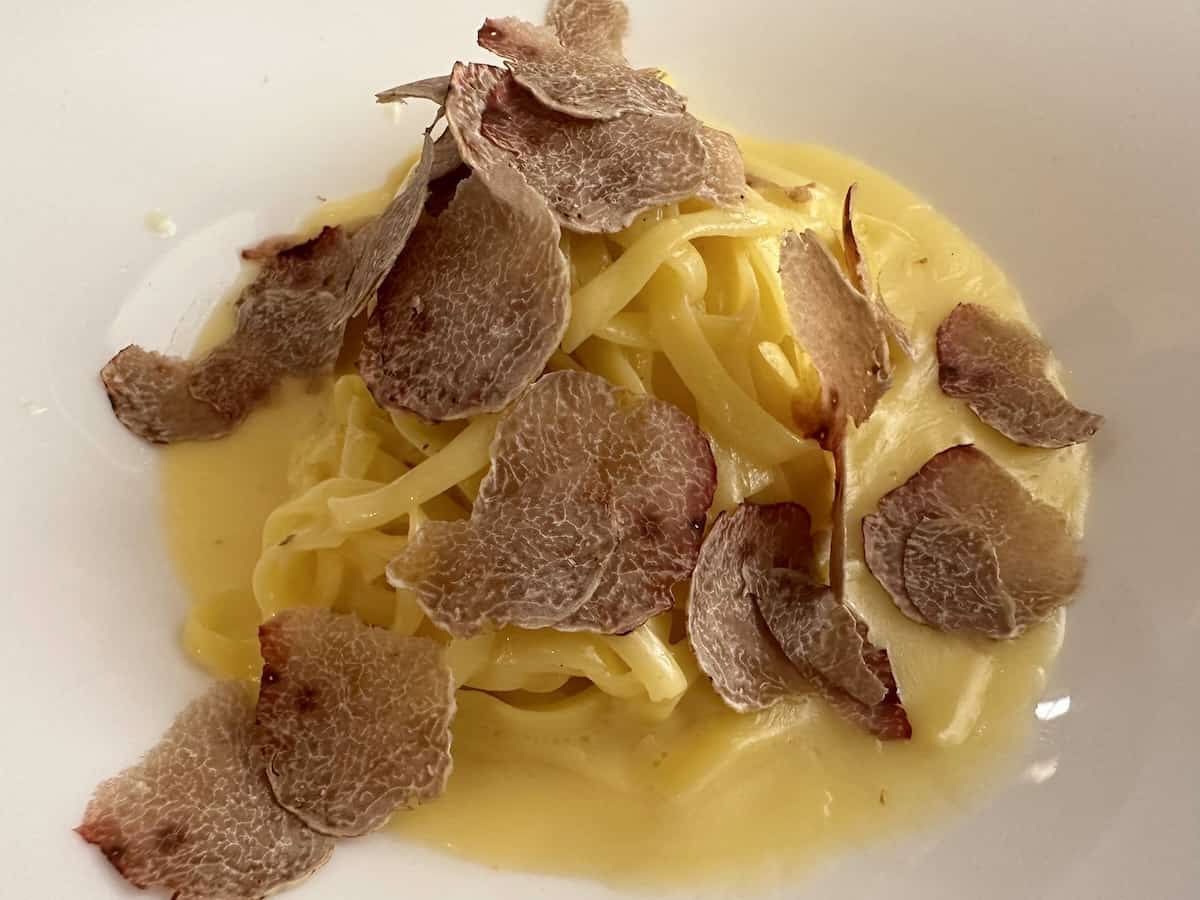
Meat lovers can enjoy heartier dishes from the interior portions of the region, often made with lamb, capretto (goat), and coniglio (rabbit), which is sometimes braised in a stew.
Some not-to-be-missed signature dishes of Ligurian cuisine include farinata (a chickpea torte), trofie pasta with pesto, focaccia (a flatbread), condiglione (tomato salad), torta verde (vegetable pie), and trombetta (an oddly shaped zucchini squash).
Prized Taggiasca extra virgin olive oil, small delicate Taggiasca olives, and basil (used to make pesto) are probably some of the region’s best-known and prized culinary products.
Although it may be hard to find, Diano Marina has its very own pasta, an egg-shaped medallion embossed with the town’s coat of arms, The Griffin.
Dining at Osteria Mood, a restaurant helmed by a talented chef in a residential neighborhood in San Bartolomeo Al Mare (about two miles from Diano Marina) was another exceptional culinary experience.
In a lovely dining room with a terrace perched high above the sea, we tasted Ligurian specialties such as chickpea panisse (bite-size chickpea fritters) and vegetable frisceu (breaded fritters) and enjoyed foie gras, housemade ravioli, and perfectly grilled meats and fish.
And wine, too
Mild sea breezes, ample sunshine, and varied soils are conducive to viticulture and wine production, although cultivating on the steep, rocky hills above Diano Marina can be challenging, sometimes called heroic.
Excellent regional wines include reds like Ormeasco di Pornassio DOC and Rossese di Dolceacqua DOC, and whites like Vermentino and Pigato DOC Riviera Ligure di Ponente.
Great Base to Explore Ligurian History, Cuisine and Culture
Finding parking spots can be difficult—both in Diano Marina (if not provided by your accommodations) and also elsewhere on the Ligurian Coast—but you’ll need a car to explore the beautiful villages tucked in the mountains throughout Imperia.
Many Ligurian hill towns, both large and small, close to Diano Marina have received the prestigious designation of I Borghi più belli d’Italia (the most beautiful villages in Italy) and are less than an hour away.
Narrow, winding roads lead up to the hills and mountains dotted with glistening olive trees, almond trees, chestnut trees, poplars, terraced vineyards, yellow mimosa, and fragrant citrus trees. Sometimes, you’ll pass through long tunnels. Views of the valleys below and the hill towns nestled above are spectacular from every vantage point.
Some standout medieval hill towns we visited include Dolceda, Seborga, Triora, Dolceacqua, Cervo, and Poggi, each steeped in unique history, culture, cuisine, and traditions. Many have charming alleyways called caruggi that invite meandering. (see my previous post about these Ligurian hill towns).
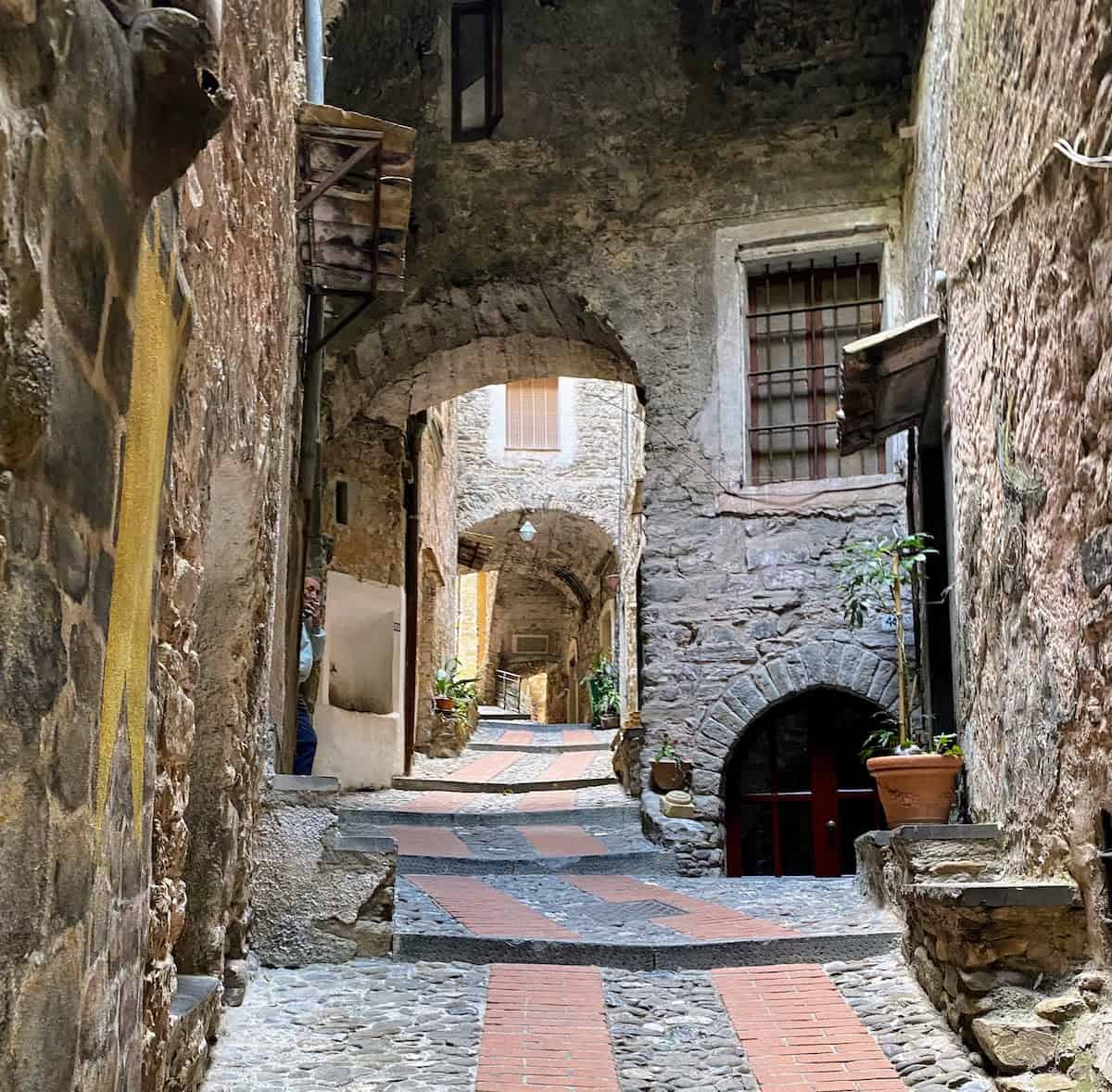
To reach other nearby beach towns, you’ll drive on Strada Statale 1 Via Aurelia, a winding highway with scenery so memorable that its curves and views above the water are reminiscent of the Amalfi coast.
Those who enjoy swimming, sailing, windsurfing, and scuba diving will enjoy nearby coastal towns on the Italian Riviera, such as Alassio, Laiguelglia, and Andoro. All offer small-town charm with scenic views and culinary delights.
My own visit to Laiguelglia turned out to be gastronomically life-changing: I was introduced to pinsa (Roman pizza) at Tino and Marco, a beachside osteria overlooking the water.
Why did we return to Diano Marina?

Diano Marina is small and unpretentious with an oversized stretch of beach on the Italian Riviera.
It’s a very affordable destination for those who appreciate unvarnished nature and beauty and want to experience authentic Ligurian culture.
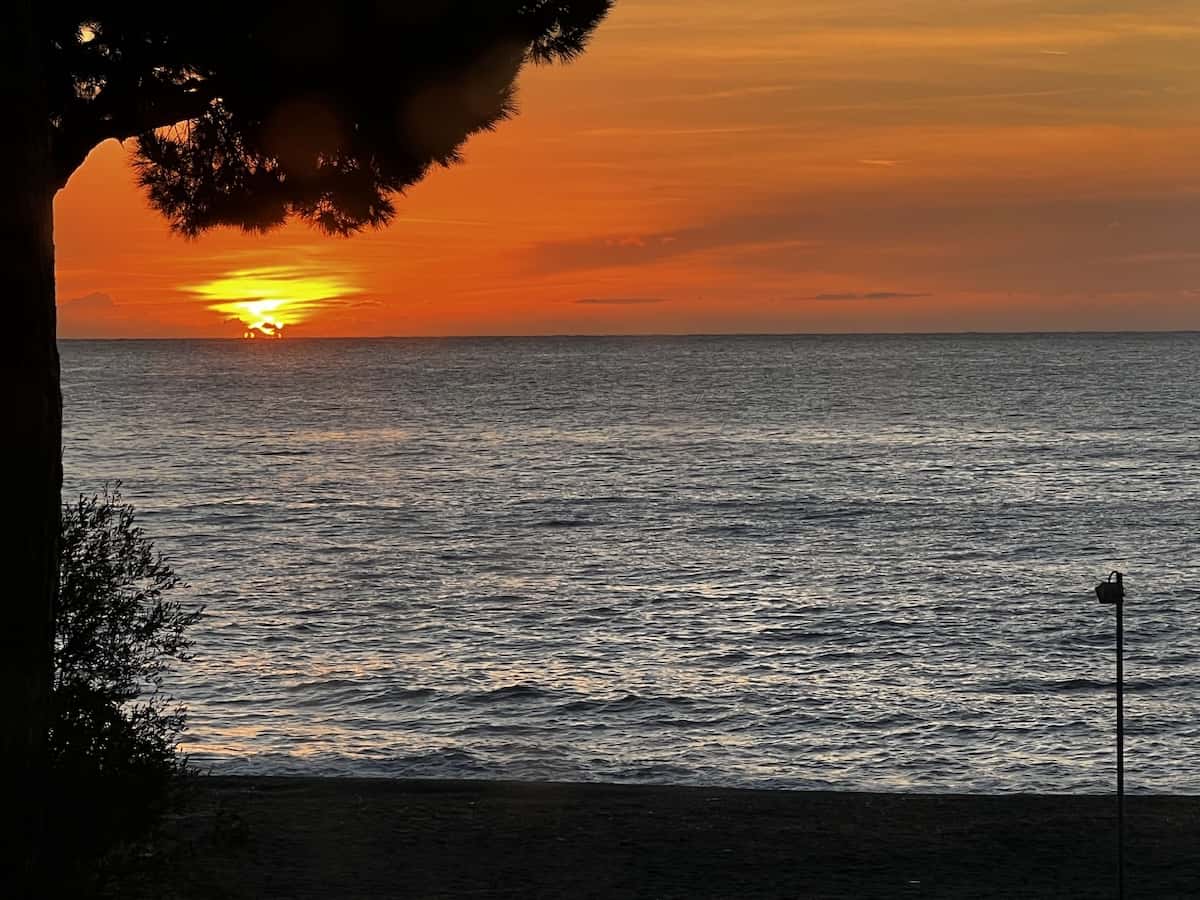
The Best of Diano Marina
These are some of our favorite places in the town:
Pasticceria Rolfi
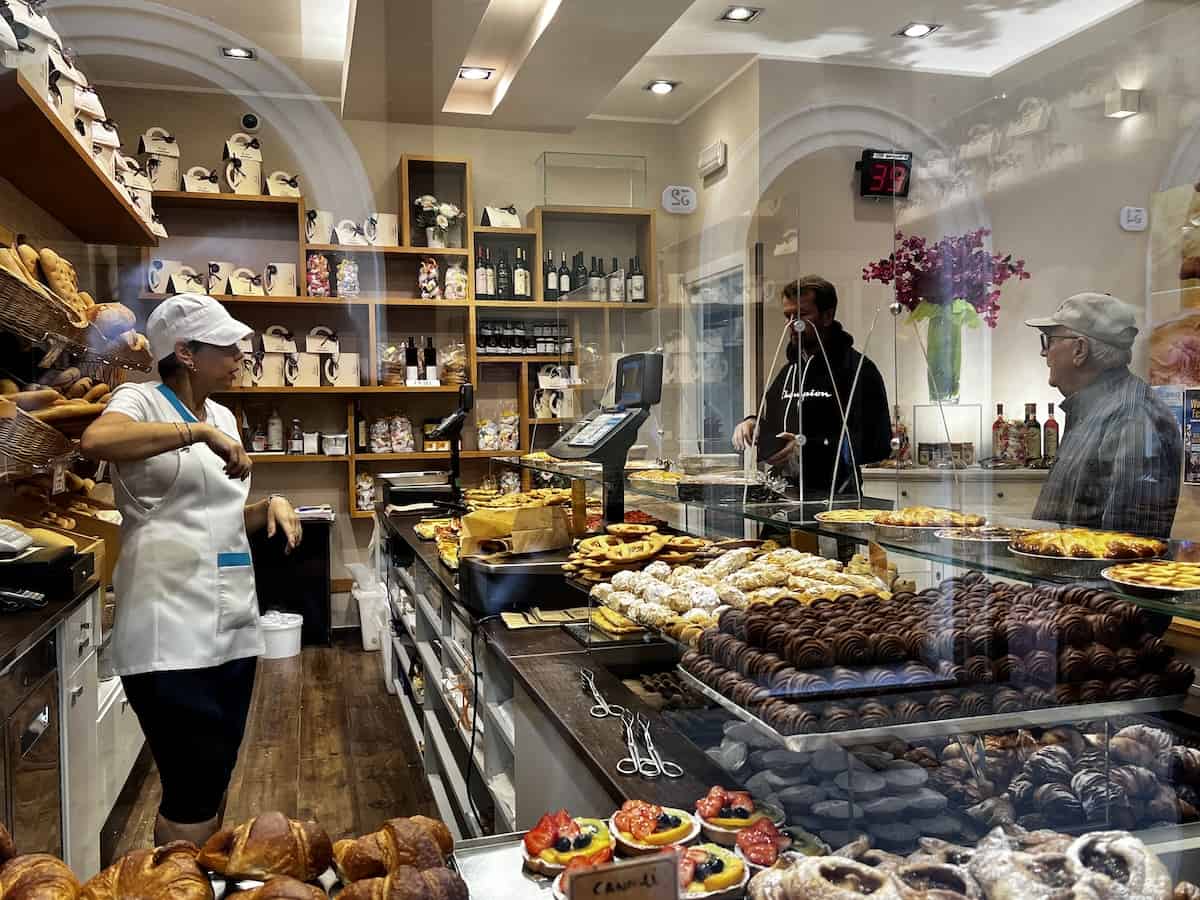
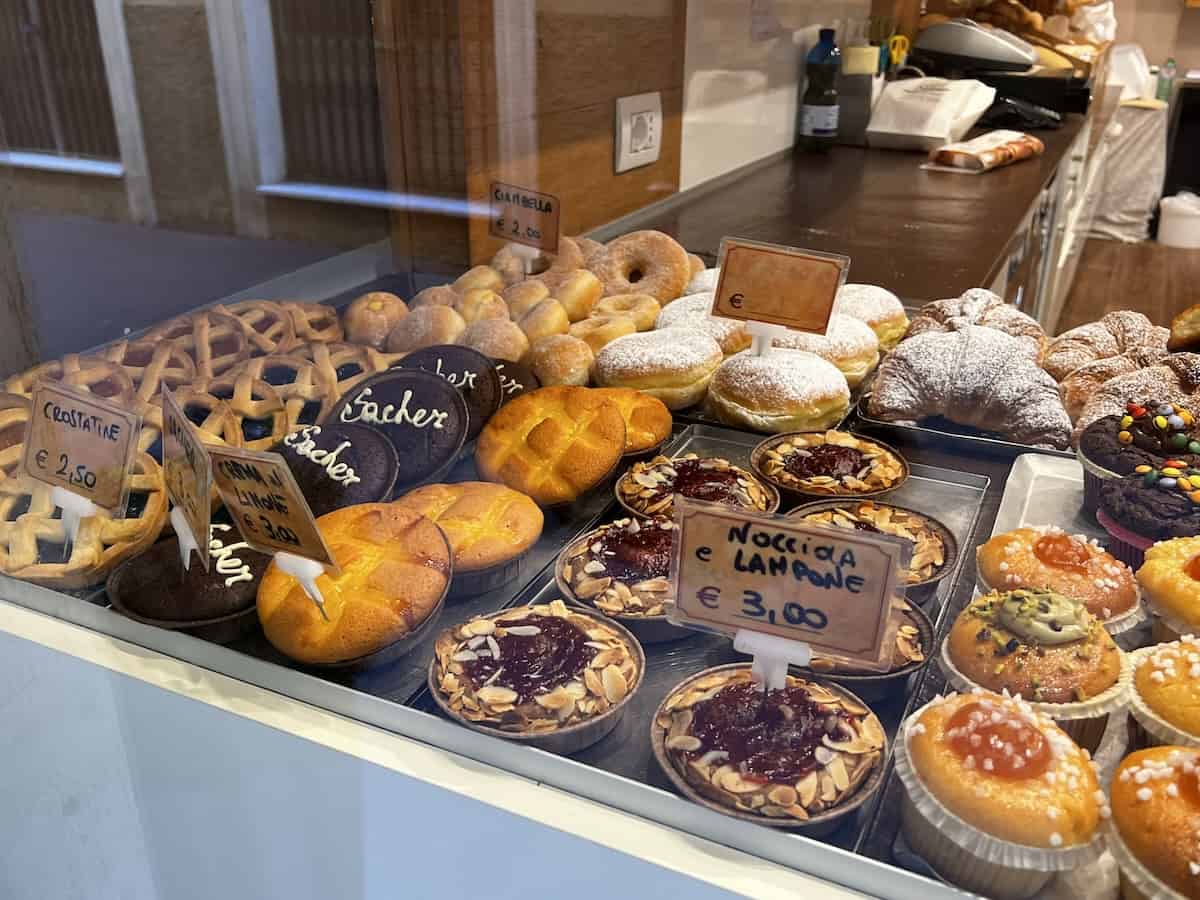
You’ll want to head to Pasticceria Rolfi if you have a sweet tooth. The bakery is on a small street (Via Saponiera) off Corso Roma.
You’ll know you are there when you see the line out the door and begin to smell the delicious aromas of freshly baked goods. This is a great place to try focaccia or chickpea farinata (a chickpea pancake), focaccia, pizza, or any of the decadent desserts, including Baci di Diano (local filled cookies).
Panificio Lanini
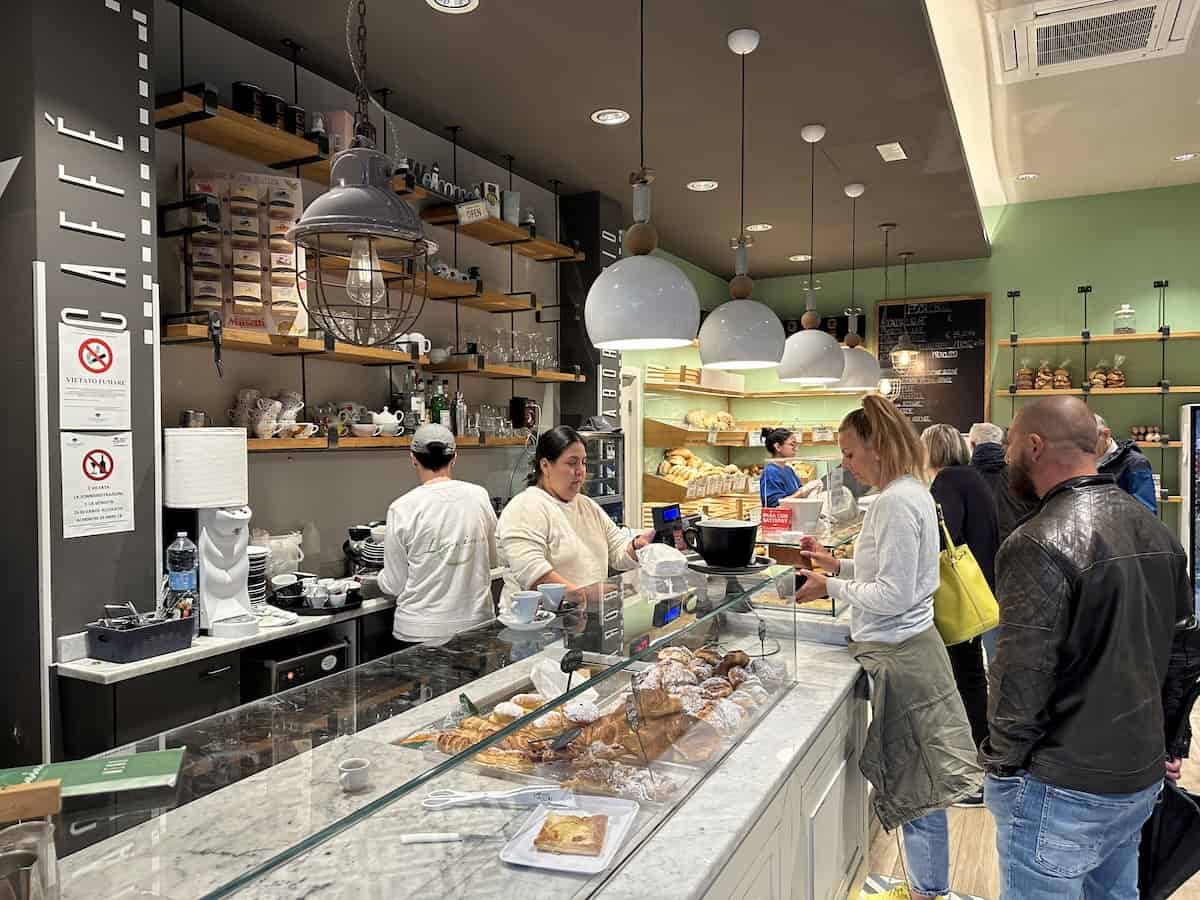
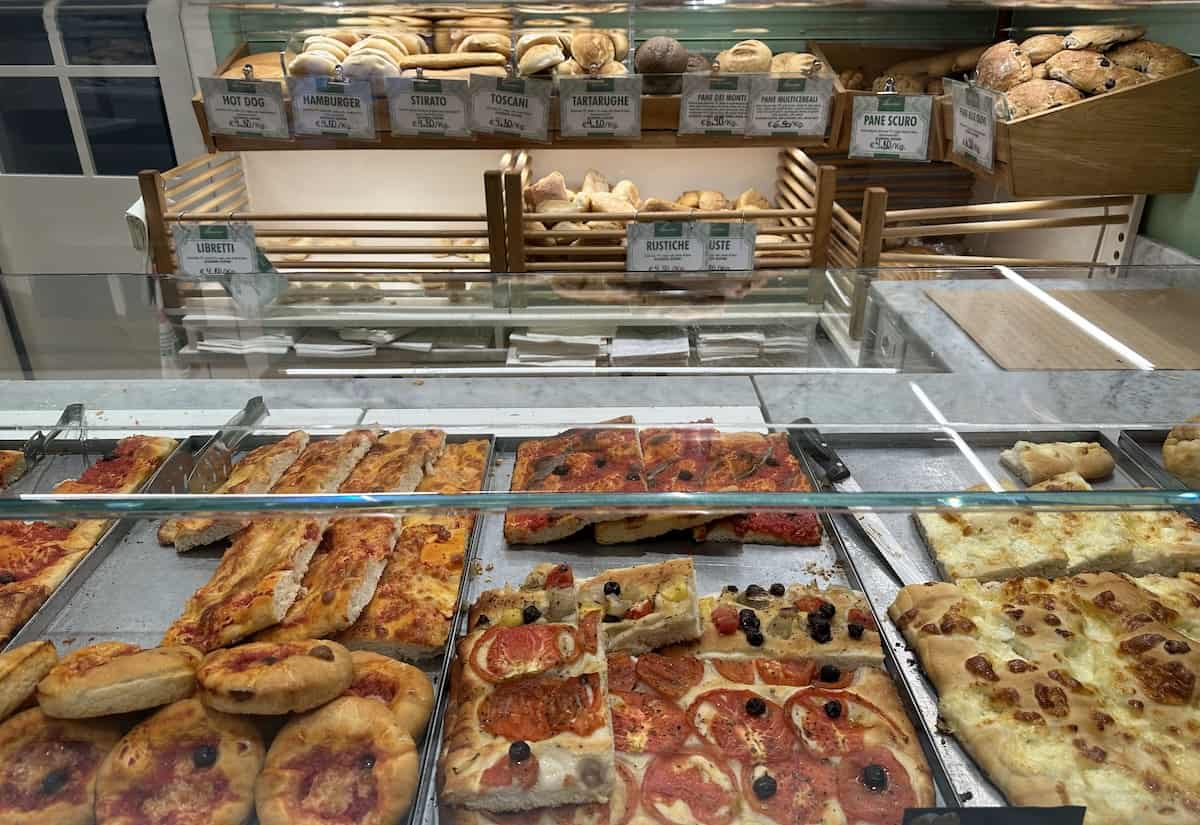
Lanini Bakery and Coffee, located on Viale Kennedy 61 (one block from the Pam supermarket), was our go-to coffee bar every morning in Diano Marina. We could eat inside, in the outdoor courtyard, or take out. The fresh pastries are displayed at the counter starting at 7 AM and are freshly baked each morning. We loved all the croissants, bomboloni, brioches, cookiesbreads, and focaccia.
This was where we fell in love with the cappuccino made with flavorful Musetti coffee. We took a can home, but that was finished quickly. We were lucky to be able to source some from Supermarket Italy.
Magia Della Lana
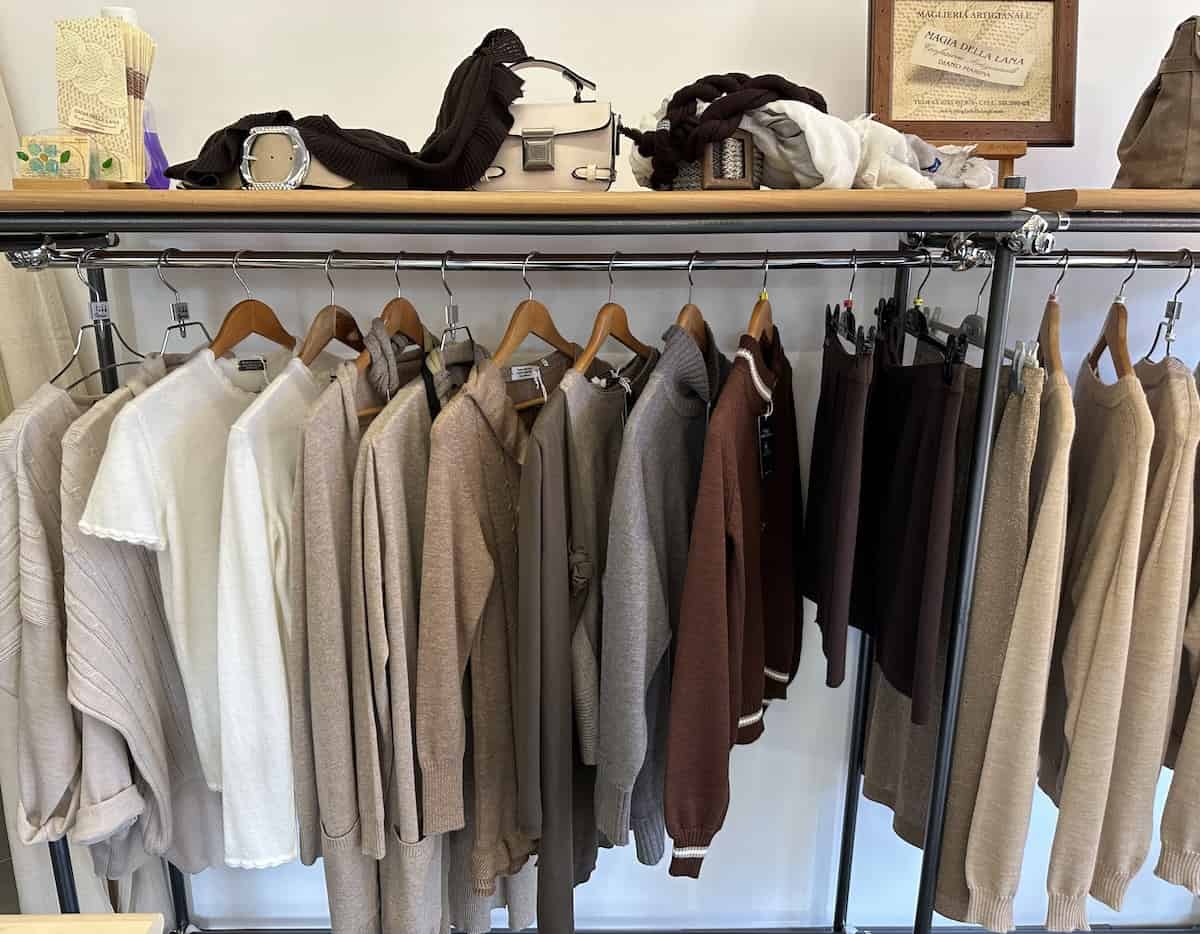
In this small shop, also on Viale Kennedy, all the sweaters, scarves, and hats are handmade with Italian wool. It’s the perfect place to purchase a gift. I found a lovely wool scarf.
All photo credits: Jerome Levine (unless otherwise noted)
IF YOU GO
Save to Pinterest!!
